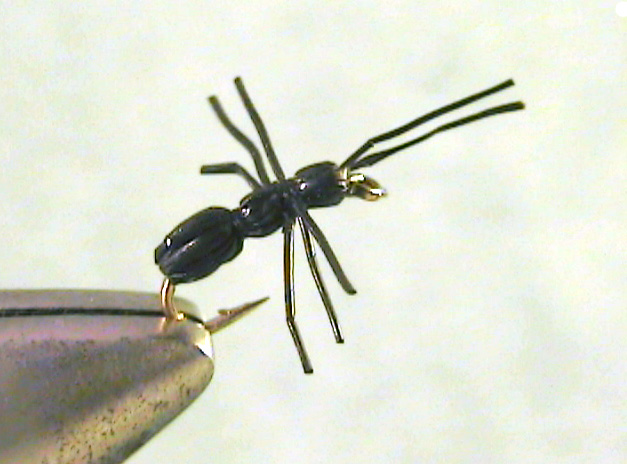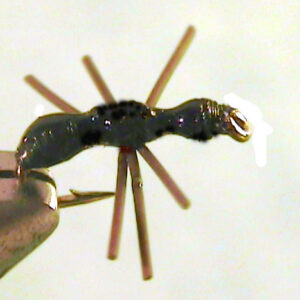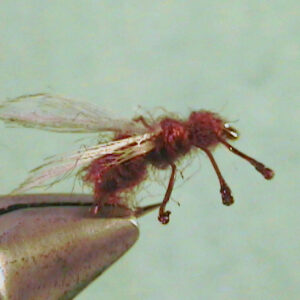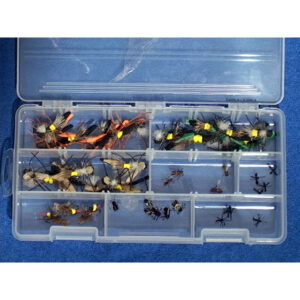Hook Size: 16/18
Like all of our ant patterns, the carpenter ants have three (3) body sections like real ants
do. Carpenter ants also have antennae. Our patterns have antennae just like the real
ants. If you have even watch hundreds of these ants getting into the water, you would
want a fly that looked like the real ones. That happens much more often than you would
expect. Carpenter ants are very plentiful around most of the nation’s trout streams.
Ants are the most numerous insect you will find around a trout stream, with maybe the
exception of the beetle. It depends on the location of the stream, but in many areas, ants
are more plentiful. They live in large colonies which have strict social organizations. Ant
colonies have one or two queens per colony. The queens do all of the egg laying.
Ants are clumsy fliers and pay little attention to where they travel on the ground. Where
you find ants migrating around the water, you’ll find them getting into the water and you’ll
find trout eating them. The Carpenter Ants are most notable because of their larger size,
but are actually only one of many ant migrations that happen around trout streams.
Fortunately, the carpenter ants look much like all the other ants found around the
streams and they are by far the most plentiful.
Anytime ants are migrating around the water, some fall in. Trout and all kinds of panfish
love ants. Foraging ants are always wingless. If you’re fishing for any species of fish that
eats insects of any kind, they will eat an ant.
Like any ant pattern, the best time to fish imitations of the carpenter ant is during the
summer and early fall when they are most plentiful. Heavy rains can wash a huge number
of these ants into the water in areas where they are plentiful. The best time to fish an
imitation of them is after a hard rain. Anywhere you can find water entering a stream,
from trickles to small runoff areas of water large enough to carry ants after a rain, is
usually a good place to fish.
We have gone a step farther than most ant flies you can obtain commercially. We have
made the legs a little more realistic. They are not just rubber bands. They are plastic that
is bent to resemble ant legs. When trout have the opportunity to view a lot of these ants
in the water, we would prefer to have one that looked like a real carpenter ant. But then
there are those anglers who believe luck is the only thing important. We like both luck
and a good imitation of anything we tie on the end of our lines.




